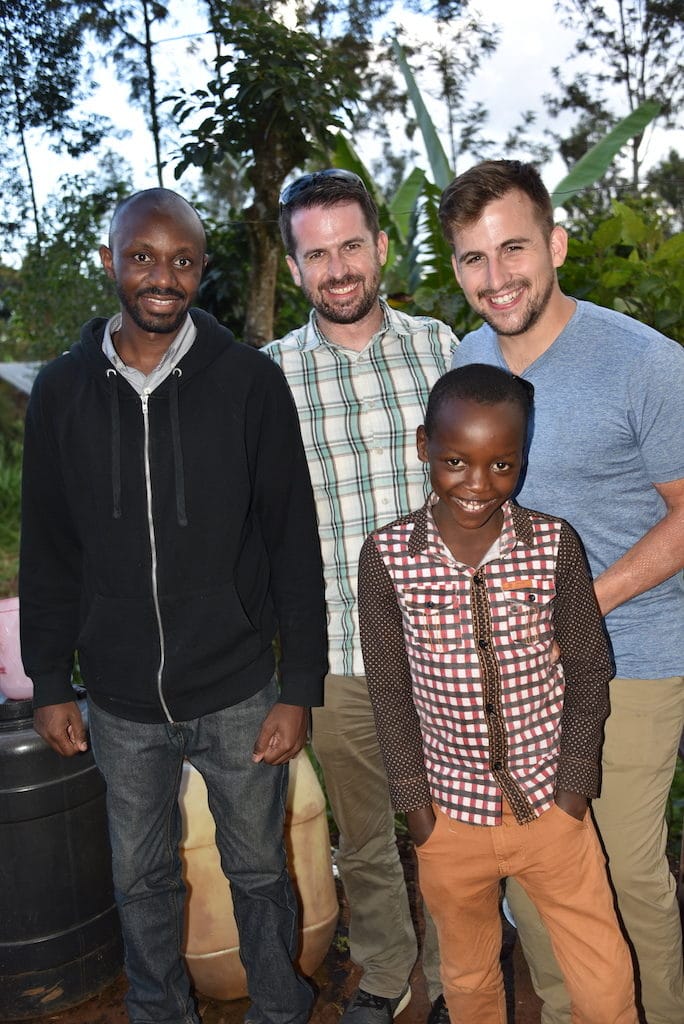Friday August 2, 2019
“…Africa is a place where the people do not need limp gifts of fish but sturdy fishing rods and fair access to the pond.” Chimamanda Ngozi Adichie
You can never know the needs of a person until you visit them in their homes. And we seek to know the needs of those in Kenya with bleeding disorders. So off we went today, to visit several families in their homes. This meant hitting the road around 8 am. With us, the Kilimanjaro climbers and Save One Life executive director Chris Bombardier, were Maureen Miruka, president of the Jose Memorial Haemophilia Society, Kehio Chege, father of a child with hemophilia and cofounder, Sarah Mwangi, dedicated JMHS employee and program manager, and Isaac Maina (Waithaka Maina), a young man with hemophilia who volunteers. We had two vans, and piled into them for our two hour journey to Murang’a.

We first made stops at the Murang’a District Hospital, and visited three families we know well–I’ll blog about them next time!
But the most exciting part of the day was meeting a new beneficiary and last child of the day to visit: Brian Mungi. Daylight was fading as we bounced and jostled down the dirt roads, lined with towering banana trees. I was excited to meet Brian, who just got sponsored by Dr. Len Valentino, formerly of Rush Hospital in Chicago and now with Spark, who I’ve known for years. We finally pulled up to a section of forest, and filtered out. Then a short walk down a well-trodden dirt path, so overgrown it felt like passing through a huge green tube.

The extended family was there to greet us: mother and father (James), grandmother, aunts and Brian and his cousins. Our entourage was pretty big too. The climbers: Myles Ganley, Shannon Peterkin, Mike Adelman, Jim Palmer and son Sam, and Wendie and Ric Chadd. Save One Life Executive Director Chris Bombardier. JMHS members Kehio, Isaac, Maureen and Sarah. And two amazing nurses from Murang’a District hospital: Judy Mwaura and Jane Mugacha.
The house, nestled into the forest, was made of steel sheets. The roof was corrugated steel sheets so the rain can run off it. (The noise made by rain falling on steel is deafening) The house was rusty, giving it a burnt red color. And the entire family lived there, despite a dirt floor and no screens on the windows to protect from mosquitoes. And no glass either. They have electricity, evidenced by the naked bulb dangling from a wire above the doorway to the home. But they had no refrigerator. Imagine living miles and miles from any store, not having a car or any transportation and lacking a fridge!
This is almost as poor as it gets.
And yet they were happy. And they were thrilled to see us. We saw right away the fire outside, and pots of food. Mutilcolor plastic chairs were brought out with decorum from a wooden shed. Nearby, a lowly cow, standing in muck, watched and mooed pathetically for attention. But the family was busy attending to us. The women stirred pots of delicious smelling food: they had prepared a feast for us! We suddenly realized we were hungry. Brian, age nine, watched quietly but with a shy smile. Brian had only been diagnosed two years ago, after visiting the Kenyatta hospital in Nairobi, two hours away.

The father, James, shared with us about how he grew up in this house as a boy, and now lives here with his family. He is a teacher, and spoke English precisely and eloquently. How they all manage to live together is remarkable. They did not seem scared of hemophilia; I think knowing how well the Jose Memorial Haemophilia Foundation cares for them makes them feel secure. And with his sponsorship, and access in the future to scholarships and factor, Brian can lead a healthy life. In fact, Brian may be the future for this family. He now has a lifeline and a path out of poverty. I started brainstorming the many ways we could help them: transportation, a new cow pen for the poor creature, a fridge, clothing.

Dinner was ready. Despite our being hemmed in by a forest of banana trees, and scuffing up the rich red soil of Kenya, the women were adamant that we all wash our hands. A pitcher of warm water and soap did the trick. We each took a plate while the women served us a delicious meat stew, rice, and mukimo—my favorite. The food was freshly killed, plucked, picked and cooked, giving it a rich flavor. The women stood aside while we, the guests, and the men ate.
I’ve been to multimillion dollar galas and hung out with celebrities, but none compared to the hospitality and class of this family. Class truly does come from within.
As darkness fell, it was time to leave. We had a long ride back. With many handshakes, hugs and promises, we walked away from the little steel shed they call home, and back up the hill to the vehicles. Like the other families, I will see them again on my next trip. And hopefully bring some items to ease their burden. They already gave me their gifts: hospitality, graciousness, and the opportunity to serve.
To sponsor a child or learn more about Save One Life, go to www.saveonelife.net


Interviewing the father 
All children love technology! 


Isaac, Chris Bombardier, Myles Ganley and Brian 

Shaft of light over the horizon as darkness falls

